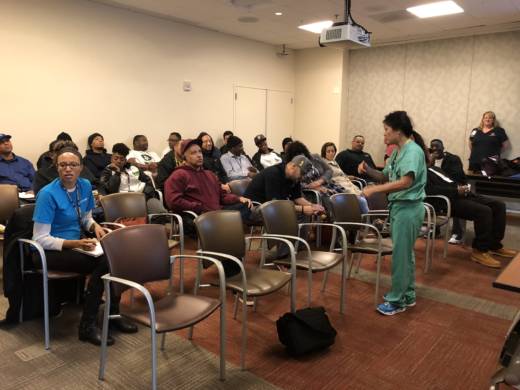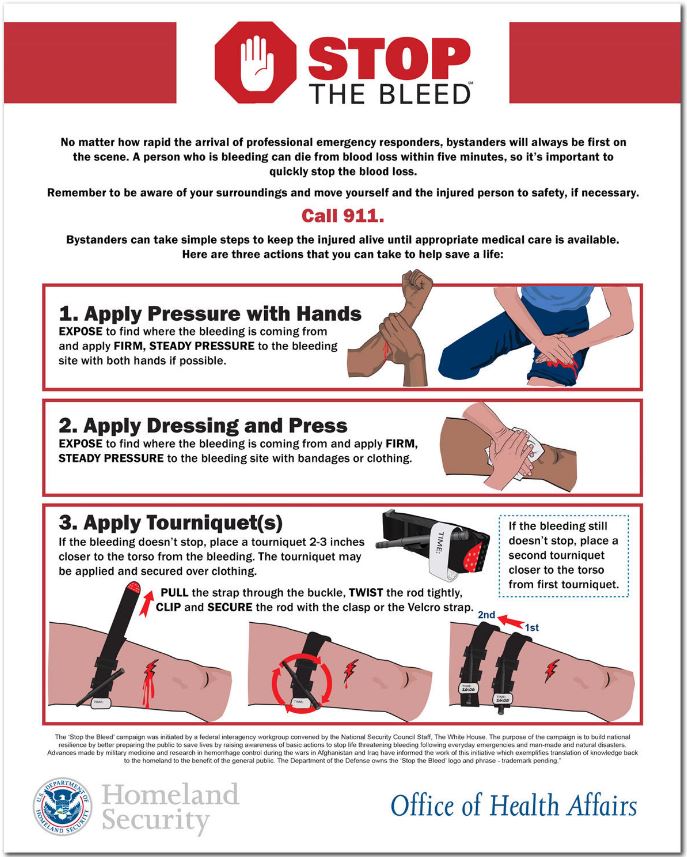Nurse practitioner Tina Quon clicked through a gory slideshow with images of wounds and squirting blood. She paused, looking to her roughly 25 trainees at Oakland's Highland Hospital. She asked for ideas about what to use as a makeshift tourniquet.
Someone called out, "a belt!" Another voice said, "shoe strings!"
In her mint-green scrubs and bright blue sneakers, Quon nodded her head in approval. She moved on, getting into the specifics and techniques for how to use tourniquets correctly and how to apply pressure to serious wounds.
Stop the Bleed began as part of a federally supported effort to teach civilian bystanders critical medical skills they can use during a shooting or other disasters. The idea is that bystanders can save lives by preventing victims from bleeding to death. That can happen in minutes, long before the ambulance arrives and even before someone has the chance to call 911.
Stop the Bleed started in 2013, in response to the December 2012 Sandy Hook school shooting. The American College of Surgeons, working closely with federal agencies, developed a simple, step-by-step training focused on hemorrhage control. The goal is to make the techniques as accessible and widespread as basic first aid, CPR, or the Heimlich maneuver.

